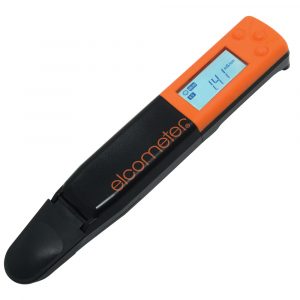Home » Products » Coating Inspection » Surface Preparation » Surface Cleanliness / Salt Detection » Elcometer 138 Conductivity Meter
Elcometer 138 Conductivity Meter

- Product Description
- Specifications
- Data Sheet
- Standards
- Instruction Manual
Product Description
Incorporating a flat sensor, the Elcometer 138 Conductivity Meter can measure the conductivity of a solution from a single drop of a sample.
Users can either place a sample on the conductivity meter’s flat sensor or immerse the meter’s sensor directly into the solution under test. The Elcometer 138 Conductivity Meter can be used for a broad range of applications, including: soluble salt concentrations, the electric conductivity (EC) of solutions used in agricultural operations and measuring rainwater pollution levels.
The Elcometer 138 Conductivity Meter features:
- Highly precise measurements can be obtained from a single drop
- Automatic range switching gives a wide measurement range of 1μs/cm to 19.99mS/cm
- Out of range and low battery alarms
- Visual indication when ambient temperature is outside the operating range
Specifications
Elcometer 138 Conductivity Meter – Specifications
Technical Specification |
|
| Part Number | Description |
| E138-CM | Elcometer 138 Conductivity Meter |
| Measurement Principle | 2 Electrode Bipolar AC |
| Measurement Mode | Conductivity, Temperature |
| Minimum Sample Volume | 0.12ml |
| Measurement Range | 0 – 19.99mS/cm |
| Resolution | 0 – 1999μS/cm: 1μS/cm |
| 2.00 – 19.99mS/cm: 0.01mS/cm | |
| Accuracy | ±2% full scale (for each range) |
| Operating Temperature | 5°C to 40°C |
| Operating Humidity | 85% or less relative humidity (no condensation) |
| Battery Type | 2 x CR2032 lithium batteries |
| Battery Life | Approx. 200 hours of continuous use without back light |
| Weight | 50g – including sensor and batteries |
| Dimensions | 164 x 29 x 20mm |
Data Sheet
Standards
Elcometer 138 Conductivity Meter – Standards
The Elcometer 138 Conductivity Meter can be used in accordance with:
- ISO 8502-6 / ISO 8502-9
- US Navy PPI 63101-000 (Rev 27)
It can also be used in accordance with ISO 8502-11; AS3894.6A and SSPC Guide 15

